Air Operations, Carolines FEAF B-24s attack the Yap Atoll.
[  | |   ] ]
Air Operations, CBI
BURMA
- 12 10th Air Force B-25s attack Maingna and bridges at Mohnyin.
- 27 10th Air Force P-40s support Allied ground troops at Myitkyina.
- More than 20 P-47s and P-51s attack targets of opportunity near Hopin and rail bridges at three locations.
CHINA
- 23 308th Heavy Bomb Group B-24s attack Changsha.
- 40 P-40s and P-51s attack Ikiawan, river traffic near Changsha, and targets of opportunity near Hengyang.
[  | |   ] ]
Air Operations, East Indies V Bomber Command B-24s attack the Atamboea airfield on Timor.
[  | |   ] ]
Air Operations, Europe
RAF BOMBER COMMAND
Daylight Ops:
- 30 Lancasters and 3 Mosquitos of No. 8 Group attack the flying bomb launch site at St Philbert Ferme through thick cloud.
Evening Ops:
- 38 Mosquitos attack the synthetic oil plant at Homberg without a loss.
Evening Ops:
- 4 Stirlings lay mines off Brest, 8 Mosquitos make flying bomb patrols and there are 5 OTU sorties.
US 8th AIR FORCE
BELGIUM:
- VIII Fighter Command fighters, on return from escort duty with heavy bombers bound for Germany, strafe the Bruges Airdrome and rail targets of opportunity.
GERMANY:
- Despite heavy high-altitude cloud cover, 213 1st Division B-17s attack and aircraft-engine factory in Munich and the Munich/Riem Airdrome.
- 52 1st Bomb Division B-17s and 206 3rd Bomb Division B-17s attack the city of Stuttgart.
- 54 1st Bomb Division B-17s attack the city of Augsburg.
- 52 1st Bomb Division B-17s attack several targets of opportunity.
- 407 2nd Bomb Division B-24s attack a marshalling yard at Saarbrucken.
- 3 B-17s and 2 B-24s are lost
- Escort for the heavy bombers is provided by 623 VIII Fighter Command fighters.
- 3 fighters are lost with 2 pilots
US 9th AIR FORCE
FRANCE:
- In separate morning and evening missions, a total of nearly 375 IX Bomber Command B-26 and A-20 sorties are mounted against ground targets in the St-Lo area, bridges in the battle area, and bridges and a fuel dump at Rennes.
US 12th AIR FORCE
ITALY:
- 12th Air Force B-25s and B-26s attack several Po River bridges.
- XII TAC fighter-bombers attack rail lines and road and rail bridges just north of the US 5th Army battlefront, which is near the Arno River.
US 15th AIR FORCE
AUSTRIA:
- Nearly 300 15th Air Force B-17s and B-24s attack an aircraft-engine factory, oil storage facilities, an airdrome, and a marshalling yard in and around Vienna.
- Between 1000 and 1040 hours, pilots of the 1st, 52nd, 82nd, 325th, and 332nd Fighter Groups down 23 Axis fighters, mostly over or near Vienna.
[  | |   ] ]
Air Operations, Marianas 318th Fighter Group P-47s attack Tinian.
[  | |   ] ]
Air Operations, New Guinea - V Bomber Command B-24s attack antiaircraft batteries at Manokwari.
- B-25s, A-20s, and V Fighter Command fighter-bombers attack the Wewak area.
- Fighter-bombers attack dumps near Moemi and shipping around Babo and Kokas.
[  | |   ] ]
Allied Planning Gen Marshall, the army chief of staff, instructs Gen Jacob L. Devers to form an army group command for ANVIL. Devers wll be subordinate to Gen Sir Henry Maitland Wilson until Gen Eisenhower is ready to take operational control. Devers will have the US 7th Army under Lt-Gen Alexander M. Patch and the 1st French Army as his major forces.
[  | |   ] ]
CBI The Myitkyina Task Force, let by American combat engineers fighting as infantry, assaults Japanese positions.
[  | |   ] ]
Diplomatic Relations The London Polish government publish a paper claiming territory in East Prussia, Danzig and the Polish Corridor for postwar Poland.
[  | |   ] ]
Eastern Front Armored columns from the 3rd Belorussian Front and the 1st Belorussian Front converge from north and south to capture Grodno, southwest of Vilna and northeast of Bialystok. The Germans launch a fruitless counterattack against the 3rd Belorussian Front's bridgeheads over the Niemen River. The Russian southern fronts in southern Poland and Galicia clash with the German North Ukraine Army Group, commanded now by Gen Josef Harpe in place of Walter Model, who has left this very day to take over command of the Army Group Center.
SOUTHERN SECTOR
The 3rd Guards Tank and 4th Tank Armies smash aside the German panzer divisions trying to hold them and break into the rear of the XIII Corps.
[  | |   ] ]
Italy The 135th Regt, 34th Div, captures Height 232 and Monte Maggiore, Heights 449 and 413, southeast of Leghorn. Units of the 133rd Regt seize Usigliano and penetrate several miles into the valley of the Arno. The 9th Div is advancing at the center of the US formations, with the 88th Div on the right.
In the British sector the 6th Arm Div takes Arezzo. The stubborn and tenacious German resistance in this sector has not only held up the Allied advance in a remarkable way, but has also allowed the units of von Vietinghoff's 10th Army and Lemelsen's 14th Army to strengthen and improve the defensive positionso on the 'Gothic' Line. Some units of the British XIII Corps press on as far as the Arno, seize a bridge and establish a bridgehead on the opposite bank. The next target is Florence.[ITALY]
[  | |   ] ]
New Guinea In the Aitape area, the 3rd Battalion of the 124th Infantry, North Force, guided by Troop E of the 112th Cavalry, advances southward to close a gap in the Driniumor line. Elements succeed in breaking through to the South Force lines, killing about 40 Japanese. The Japanese are seen crossing the Driniumor about 2,500 Yards south of Afua. The 1st and 2nd Battalions, 127th Infantry, which have been released from the main line of resistance, begin mopping up west of the Driniumor.
On Noemfoor, the 503rd Parachute Infantry finds that the enemy has withdrawn from Hill 670 and contact is again lost for a time. The Kamiri airfield is ready to accommodate and entire fighter group.
At Wakde, the 31st Infantry Division under command of Maj-Gen John C. Pearsons begins the relief ot he 6th Infantry Division. The battle fo Wakde-Sarmi and Lone Tree Hill has cost the Americans 114 killed and 284 wounded. There are over 400 non-combat casualties, most of which are classified as neuropsychotic. Over 900 Japanese are dead. Wakde and Maffin Bay will become an important staging base for future operations.
[  | |   ] ]
Pacific - TG 17.16 continues attacking Japanese convoys off northern Luzon. The submarine Piranha (SS-389) sinks the army transport Seattle Maru (5773t); Guardfish (SS-217) sinks transport Mantai Maru (5863t) and army cargo ship Jinzan Maru (5215t); Thresher (SS-200) sinks the army cargo ship Shozen Maru (2838t) and damages merchant cargo ships Sainei Maru (4916t) and Nissan Maru.
- The US submarine Bonefish (SS-223) sinks the Borneo-bound Japanese cargo vessel No.3 Tatsu Maru in the Sulu Sea about 10 miles south of Palawan.
- The US submarine Skate (SS-305) sinks the Japanese transport Nippo Maru (1942t) east of South Sakhalin, Kurils. Survivors are rescued by the Russian ship Dalstroi.
- The Japanese cargo ship Hozan Maru (2893t) is destroyed in an explosion in Manila harbor.
[  | |   ] ]
Western Front The American VI Corps continues to push on with 2 divisions, the 9th on the right and the 30th on the left, in the direction of the road linking Periers and St Lô. They are opposed in this sector by the German 5th Parachute Div and the Panzerlehr Div. In the vicinity of La Madeleine, on the Bayeux-St Lô road, the 29th Div tries without success to reach the units cut off after the attack on the 15th.[WF]
On the right of the British 2nd Army, the 59th Div of XXX Corps attacks in the direction of Noyers, while the 50th strengthens its positions near Hottot-les-Bagues. Further east, the 15th Div of XII Corps capture Gavrus, Bougy and Esquay, the latter above Evrecy.[CAEN]
In a report sent to the General Headquarters of Army Group West Rommel emphasizes that since June 6 his units have lost nearly 100,000 men killed, wounded and missing, including 2,360 officers, of whom only one-tenth have been replaced. He warns that his troops are being steadily and inexorably exhausted. His message ends on a pessimistic note: 'The enemy is on the point of smashing our weak front line and penetrating deep into the interior of France.'
[  | |   ] ]
Images from July 16, 1944
5.5in Medium Guns Firing at Night
|
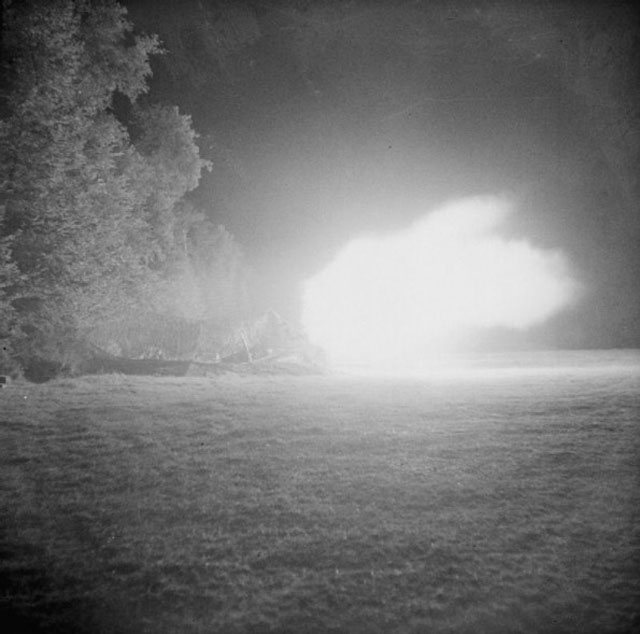 |
|
5.5in Medium Guns Firing at Night
|
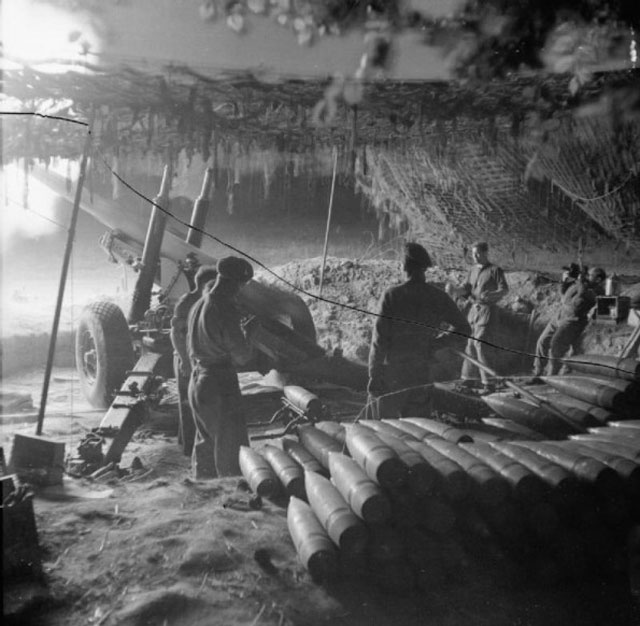 |
|
Churchill Tanks Move Up at Dawn
|
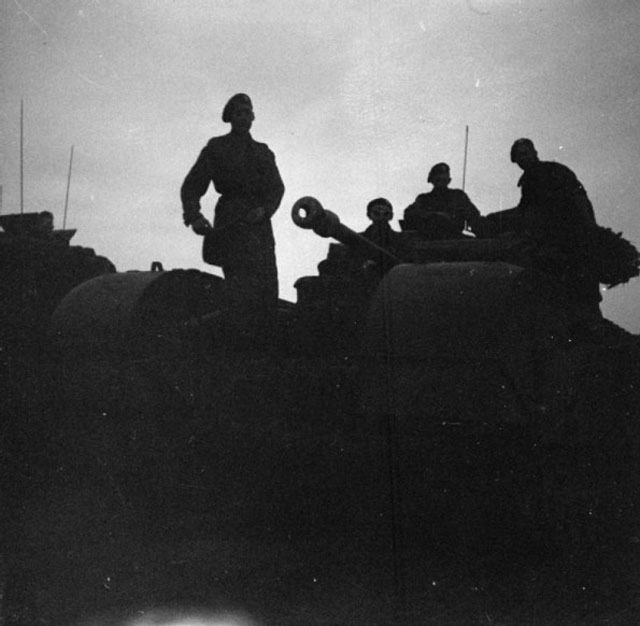 |
|
Toward the Village of Tourville
|
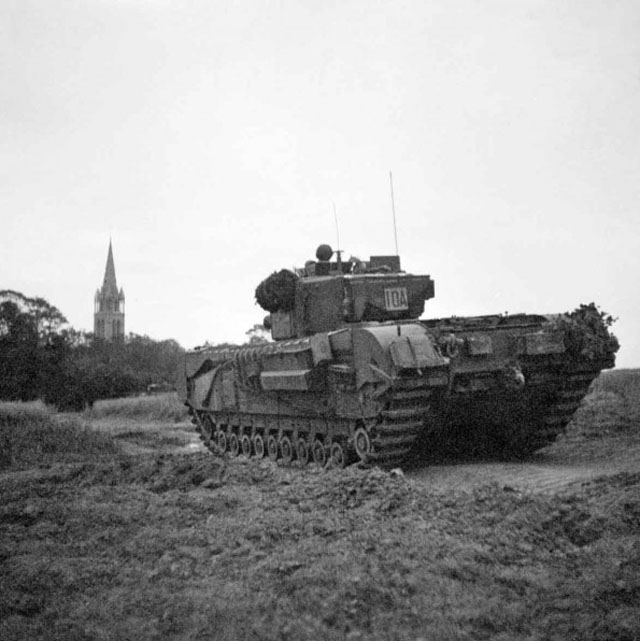 |
|
Writing Home from His Slit Trench
|
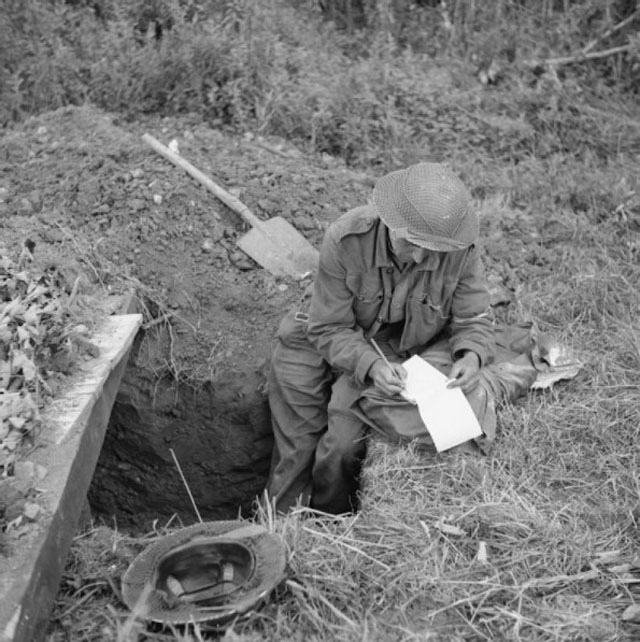 |
|
Packing His Medical Bag
|
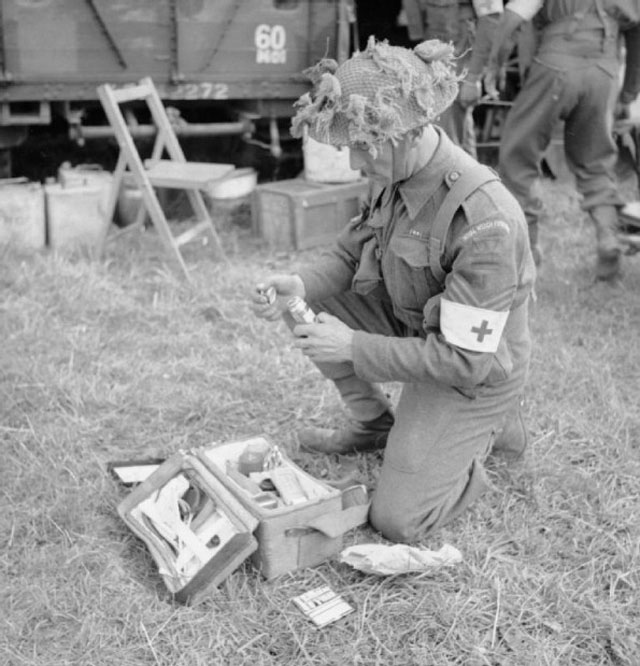 |
|
A Sergeant Briefs Men
|
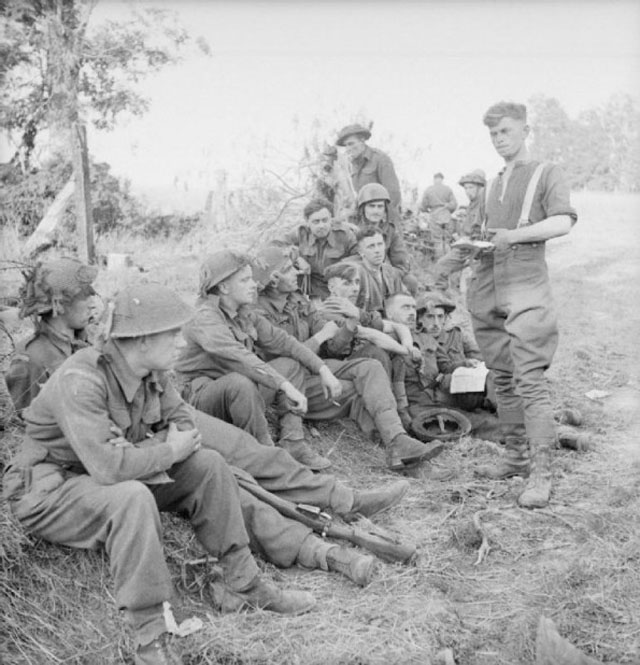 |
|
Briefing His Officers
|
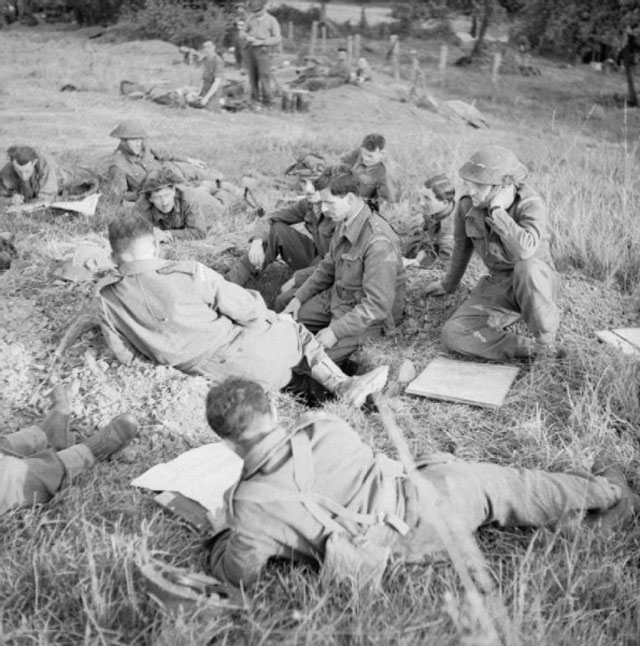 |
|
Infantry Occupy Slit Trenches
|
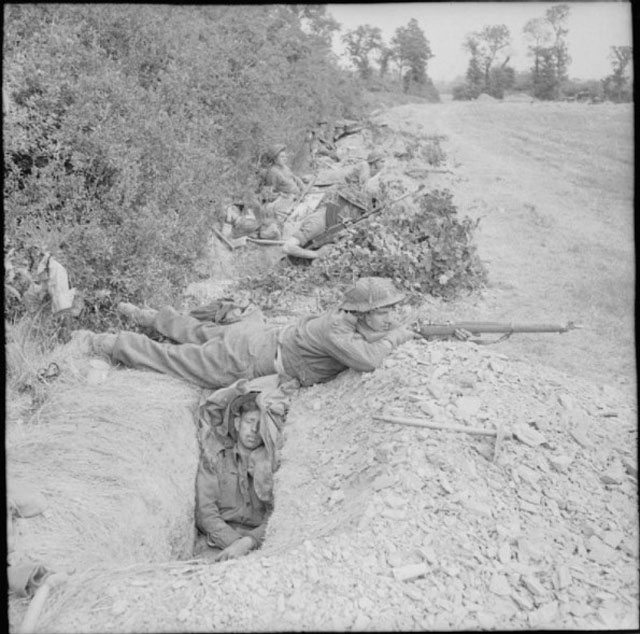 |
|
Despatch Riders Having a 'Brew'
|
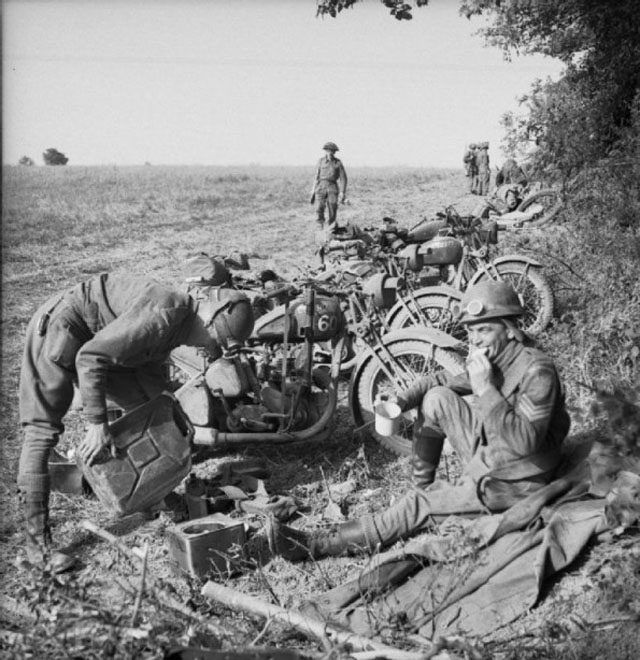 |
|
Infantry Moving Up During Attacks
|
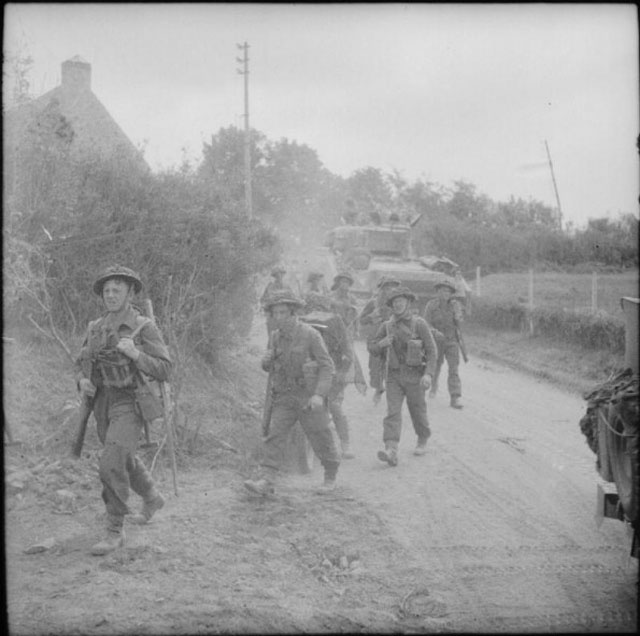 |
|
A Sherman Firefly Advances
|
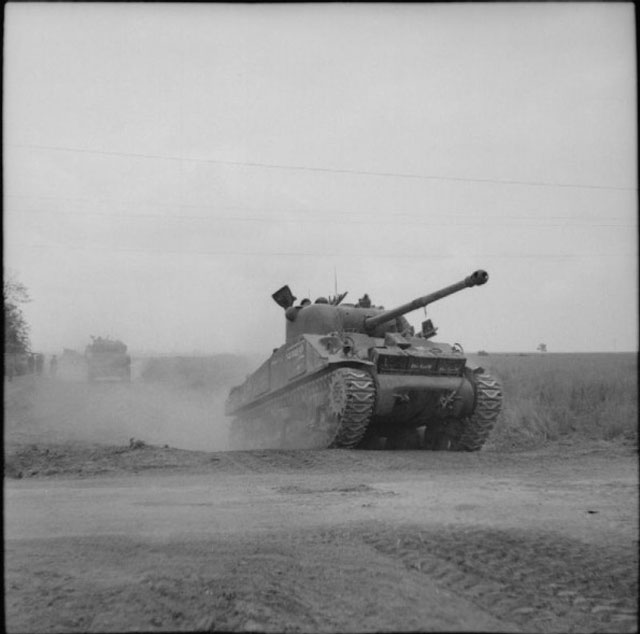 |
|
A Sherman Tank Aadvances
|
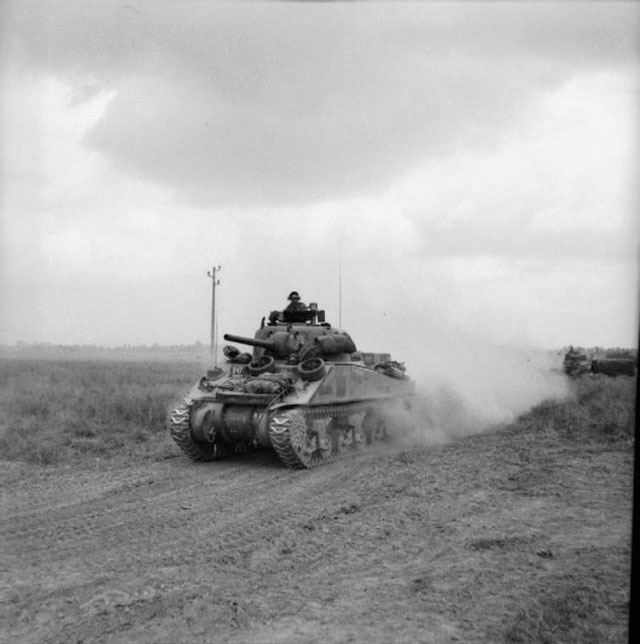 |
|
Universal Carrier Drives Through a Gap
|
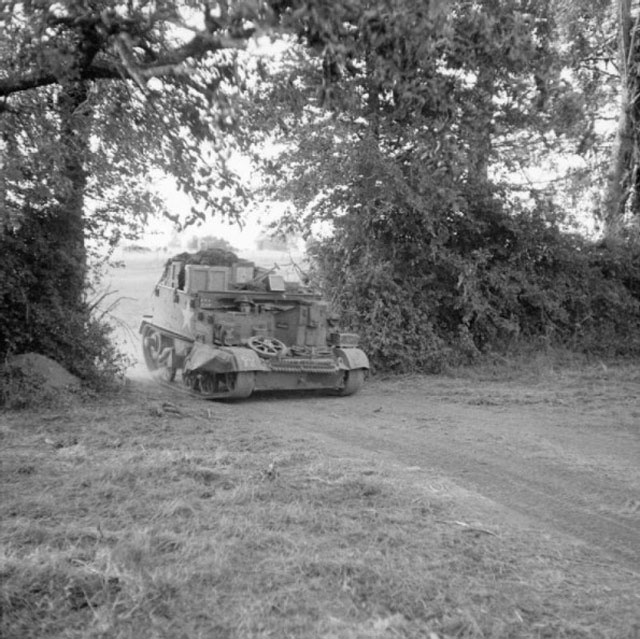 |
|
Sherman Tank of 26th Armored Brigade
|
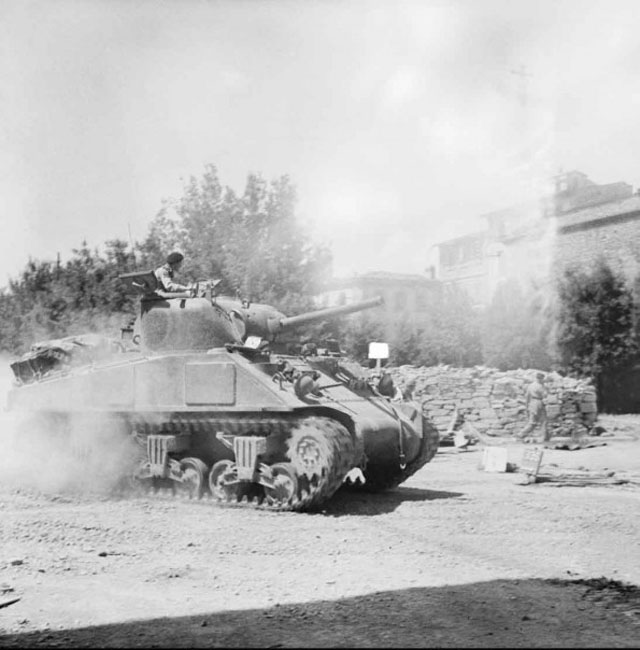 |
|
Watching Churchill Tanks Moving Up
|
 |
|
Passing Through Arezzo
|
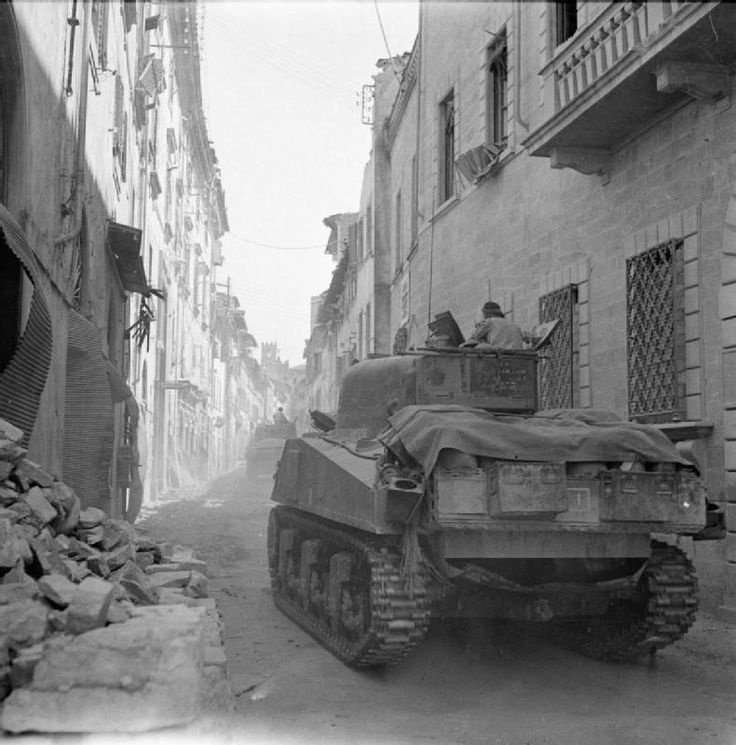 |
|
British Infantry Advance near Arezzo
|
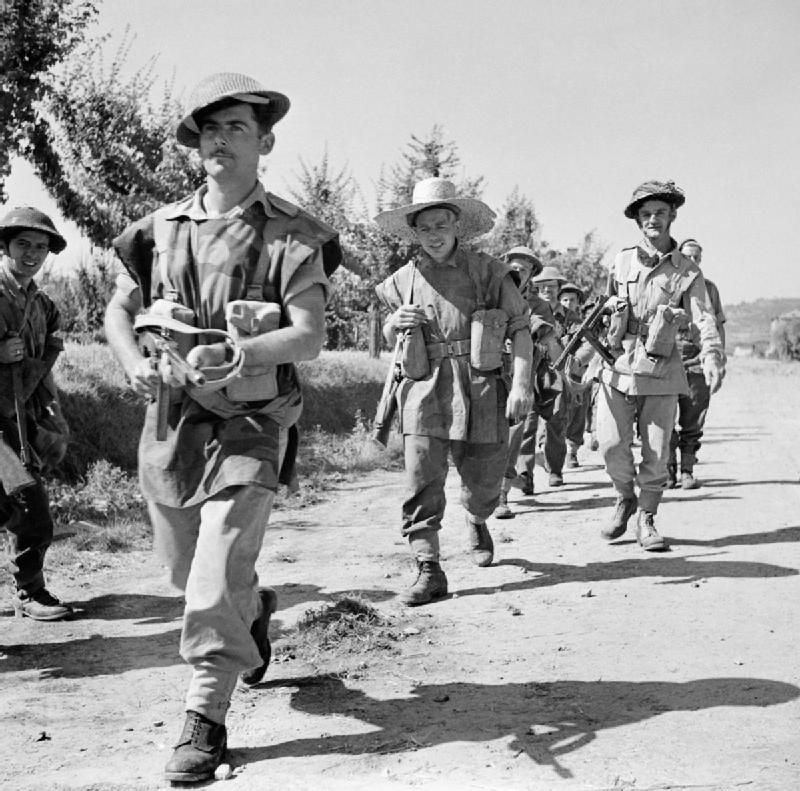 |
|
Passing Through a Railyard
|
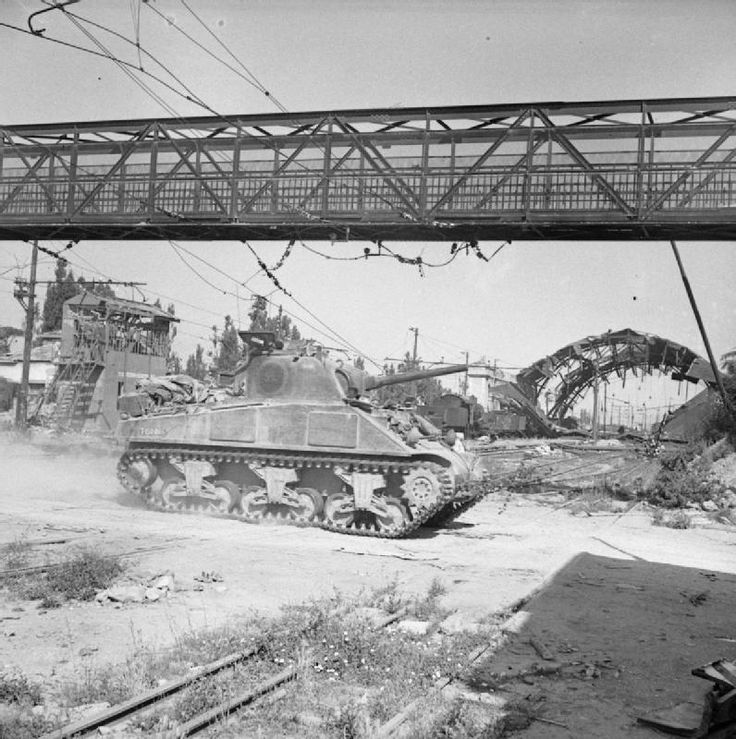 |
|
A Half-track Passes a Knocked-out German Panther Tank
|
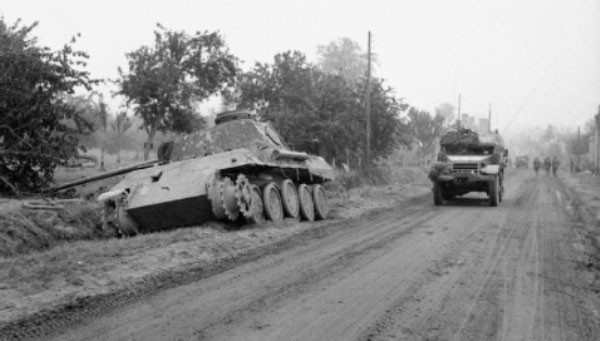 |
|
|



















